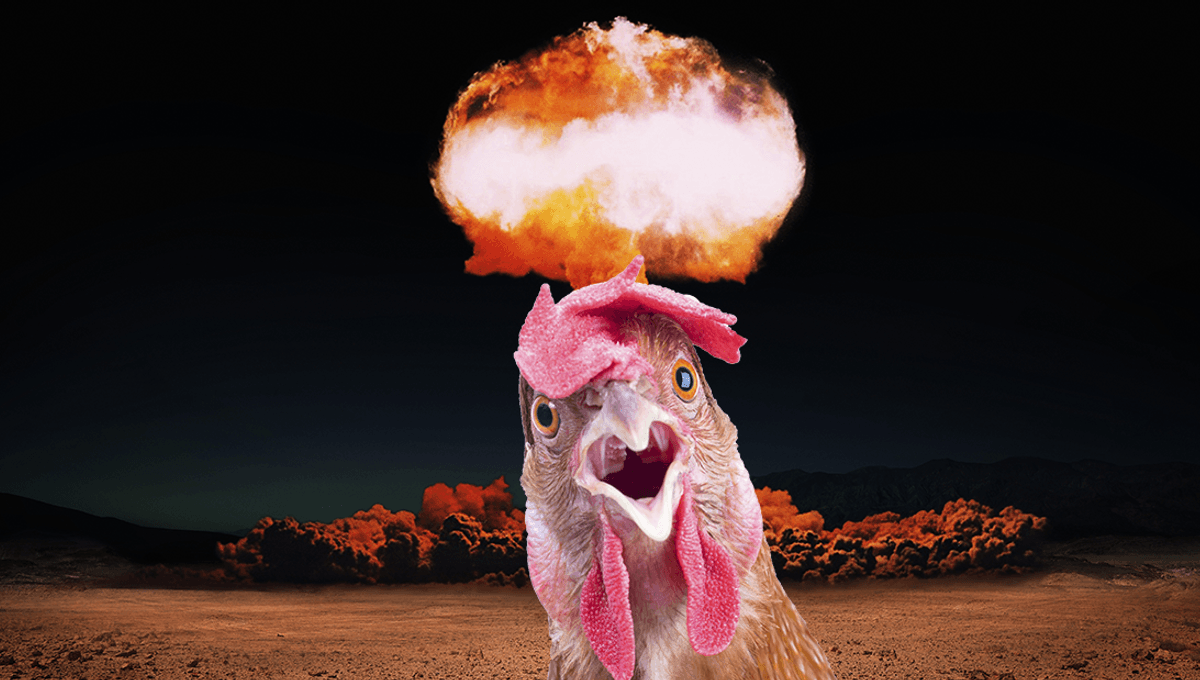
The USA has a reputation for coming up with some pretty wacky uses of nuclear weapons, from dropping nuclear bombs on the Moon, to dropping a nuclear bomb on Alaska. But they are not the only country to go wild with these weapons of mass destruction. In the 1950s, the UK worked on a plan that would involve placing a bunch of chickens within a nuclear bomb.
ADVERTISEMENT GO AD FREE
During the Cold War, Western Europe was worried about the threat of a possible invasion by Russian forces, pushing their way through northern Germany. The British government, concerned by the possibility, began looking for ways to slow down such an invasion.
The solution they came up with in the mid-1950s, codenamed Blue Peacock, was to bury a 10-kiloton nuclear mine in northern Germany, which could be activated remotely or by a timer on up to an 8-day delay. The idea was, quite simply, that Russia would be put off by the resulting radioactive contamination.
“A skillfully sited atomic mine would not only destroy facilities and installations over a large area,” a classified paper from 1955 explained, as reported by Discovery, “but would deny occupation of the area to an enemy for an appreciable time due to contamination.”
There were a few challenges to creating such a working mine, but it turned out to be nothing that couldn’t be solved by chickens.
One major problem was that the only nuclear bomb available to the UK at the time, the Blue Danube, needed to be stored under climate-controlled conditions. Tests conducted by the UK found that the cold conditions of Europe in winter could cool the weapon so much it would not operate.
ADVERTISEMENT GO AD FREE
As well as adding insulation, in 1957 those working on the project came up with the chicken solution. In order to keep the bomb warm and operational, the idea was to take a group of unsuspecting chickens and seal them within the bomb’s casing. The chickens would be provided with food and water inside their new temporary home, with enough to keep them alive for around a week. The heat from the chickens’ bodies would keep the bomb warm and operational, before their bodies were scattered over an incredibly large area.
Prototypes of the nuclear mines were made, but the project, thankfully, did not come to fruition, and was canceled after a single test. When the plans were revealed by the UK National Archives in 2004, it happened to be April 1, meaning that the organization were forced to clarify to the media that it was not a hoax.
“It is not an April Fool. These documents come straight from the archives at Aldermaston. Why and how would we forge them?” Professor Peter Hennessy, curator of the Secret State exhibition which featured Blue Peacock, told The Times, per the BBC.
“It does seem like an April Fool but it most certainly is not,” Tom O’Leary, head of education and interpretation at the National Archives, added. “The Civil Service does not do jokes.”
Source Link: In The 1950s, The UK Tried To Make A Nuclear Bomb Filled With Live Chickens